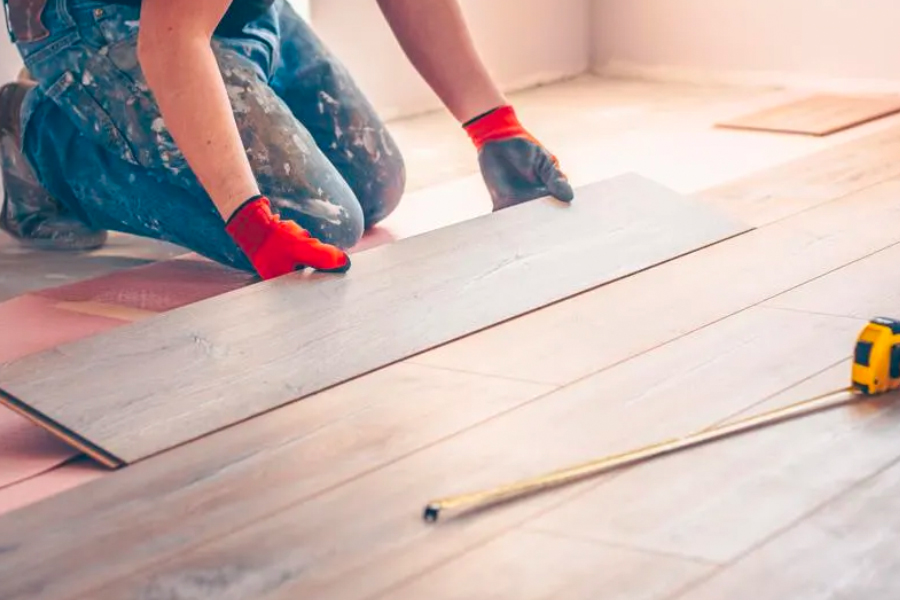
INSTALLATION OF WOODEN FLOORS TO GLUE OR NOT TO GLUE
Wood flooring has been one of the most popular floor coverings since ancient times. In today’s world, they remain popular and appreciated. Although many flooring materials are now available that mimic wood flooring or other materials, there is no doubt that natural wood will continue to be appreciated in the future, whatever technology may offer. It is even likely that the value of natural materials will increase further.
Wood flooring manufacturers are not doubting the benefits of technology and are actively applying it to their products, so that today there are a wide range of different types and designs of parquet flooring available, including plank parquet, parquet in solid and mosaic form, and multi-layer parquet. The latter are the most popular, with multilayer parquet accounting for around 80{5f922e5c5efe4a3151d226147ec3a3f15af86e64a38e2762095ba811ad676745} of the wood flooring market. This is not surprising given their advantages: high stability, ease of installation of wooden floor and a wide range of patterns and colours. Most parquet is also suitable for installation on heated floors. Wooden floors are almost always fixed to a subfloor (concrete, wood or other). Multi-layer parquet flooring is different from other wooden floors in that it can be installed in two ways: by sliding or by gluing to the subfloor.
Which is the better way to choose
Floating (or ‘floating’) flooring is installed by fixing the elements only to each other and not to the subfloor. The parquet boards are fastened together with a special click lock and underneath them a special roller underlay must be laid, such as a natural cork underlay, which is good at dampening the echo of footsteps and blends in well with the wood’s characteristics.
If necessary, a damp-proofing membrane may also be applied. It is important to remember that both the floor covering and the underlay must be laid on a levelled subfloor. This method of floor installation is convenient in that the underlay can be walked on immediately.
When choosing the bonding method, it is important that the subfloor to which the parquet flooring is attached is smooth. The parquet is glued directly to the subfloor using a special parquet glue.
Neither of these two methods is superior to the other. It is just that each has its own advantages and the consumer chooses on the basis of their importance.
The most important decision criteria
Background. Whichever method you choose, the substrate must be smooth, clean, and dry enough. If the parquet is glued, the subfloor must be more robust as it must be able to withstand the movement of the parquet through the glue. Sliding parquet can be laid even on dry floors (plasterboard). In addition, the film used under the parquet for the latter method of laying allows the slight excess moisture in the substrate to be isolated.
Compensation joints. The sliding method requires wider joints and larger finishing profiles at intervals of about 10 m or between rooms. In the case of glued floors, they are often not needed at all, and where they are needed, expansion joints may be narrower and therefore covered with more subtle finishing strips or simply sealed with elastic fillers. We recommend that you seek specialist advice on this.
Acoustics. When walking on floating floors, there is a certain amount of scuffing, especially with hard-soled footwear. Acoustic underlay under the parquet flooring can dampen these sounds, but it’s not cheap at ~€4 per square metre. Glued parquet is much quieter.
Underfloor heating. Most modern parquet flooring can also be installed on heated floors. Glued floors are more resistant to temperature fluctuations and have excellent heat transfer. When installing floating floors, the underlay used increases the resistance of the floor, so it warms up more slowly. For this reason, it is not rational to use good acoustic underlay as it will make it more difficult for the floor covering to warm up.
Maintenance. The unevenness of the subfloor is more noticeable with floating floors, where there is a squeaking sound when walking. Glued floors are more comfortable in this respect: the surface is much more stable and firm, and there are no creaks.
Renovation and repairs. Although it is not very easy to refurbish floating floors, and sanding the surface removes a thicker layer, it is possible to dismantle the floor if necessary, or it is much easier to replace a damaged parquet floor. While it is both more difficult and more expensive to dismantle laminate flooring, it is more convenient and easier to restore because it is more stable.
Price. The cost of gluing parquet flooring is higher: glue and primer costs ~ €5-10 per m2 and installation costs ~ €6-8 per m2. For floating floors, you will have to buy underlay (~0.50-2 €/m2) and the installation will cost only ~4-6 €/m2.
Choosing a floor adhesive
Parquet adhesives should not only hold the flooring firmly and reliably, but also be environmentally friendly. Solvent-based adhesives are becoming increasingly common in various countries are increasingly being banned because of their harmfulness. It is better to choose safer, water-based, solvent-free adhesives. The cleanest adhesives carry the EC1 ultra-low emission label or even Blue Angel certification. All wooden floors react to changes in the weather by shrinking and expanding and should be glued with a flexible, long-lasting adhesive. As parquet is much more stable than other types of wood flooring, it is possible to use a slightly simpler, hard elastic adhesive that is both cheaper and specifically designed for fixing multi-layered wood coverings. For solid wood floors – floorboards, parquet – it is recommended to use a high-tack, highly elastic adhesive that is able to withstand the seasonal deformations of the wood and does not crack.

